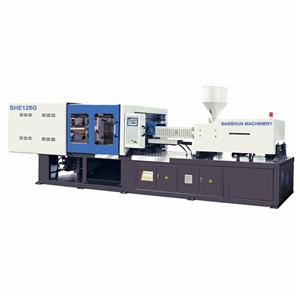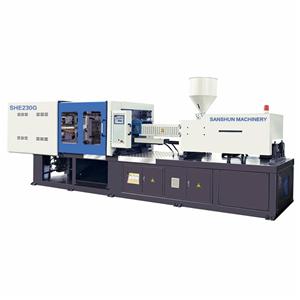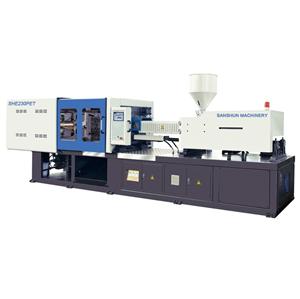- Home
- >
- News & Resources
- >
- Our Blog
- >
- Depth understanding injection mold vent groove design features
Exhaust Vent
It is a trough-shaped air outlet opened in the mold to discharge the original gas and the gas brought in by the molten material. When the melt is injected into the cavity, the air originally stored in the cavity and the gas brought in by the melt must be discharged out of the mold through the exhaust port at the end of the material flow, otherwise the product will have pores, poor connection, Dissatisfaction with the filling of the mold, and even the accumulated air will burn the product due to the high temperature generated by the compression.
Under normal circumstances, the vent hole can be located at the end of the melt flow in the cavity or on the parting surface of the mold. The latter is a shallow groove with a depth of 0.03-0. 2mm and a width of 1.5-6mm on one side of the cavity.
During injection, there will not be a lot of molten material in the vent hole, because the molten material will cool down and solidify there and block the channel. The opening position of the exhaust port should not be facing the operator to prevent accidental spraying of molten material and hurting people. In addition, the gap between the ejector rod and the ejector hole, the gap between the ejector block and the stripper plate and the core can also be used for exhaust.
01 The role of the exhaust slot
The function of the exhaust groove mainly has two points: one is to remove the air in the mold cavity when the molten material is injected; the other is to remove various gases generated during the heating process of the material. The thinner the product, the farther away from the gate, the opening of the exhaust groove is particularly important.
In addition, for small parts or precision parts, the opening of the venting groove should also be paid attention to, because it can not only avoid surface burns and insufficient injection volume, but also eliminate various defects of the product and reduce mold pollution.
So, what is sufficient exhaust of the cavity? Generally speaking, if the melt is injected at the highest injection rate, but no focal spots are left on the product, it can be considered that the exhaust in the cavity is sufficient.
02 Exhaust method
There are many ways to vent the mold cavity, but each method must be guaranteed: the size of the vent groove should be designed to prevent the material from overflowing into the groove while venting; secondly, it must prevent blockage. Therefore, measuring from the inner surface of the mold cavity to the outer edge of the mold cavity, the height of the venting groove above 6-12mm should be about 0.25-0.4mm.
In addition, too many exhaust grooves are harmful. This is because if the clamping pressure acting on the parting surface of the mold cavity without opening the vent groove is very large, it is easy to cause cold flow or cracking of the cavity material, which is very dangerous.
In addition to venting the mold cavity on the parting surface, it can also achieve the purpose of venting by arranging venting grooves at the end of the material flow of the pouring system and leaving gaps around the ejector rods. If the selection of the depth, width and position of the opening is not appropriate, the flash burr produced will affect the appearance and accuracy of the product. Therefore, the size of the above gap is limited to prevent flash around the ejector rod.
Special attention should be paid here: when parts such as gears are exhausted, even the smallest flash may be undesirable. For this type of parts, it is best to exhaust the following methods:
Completely remove the gas in the flow channel;
Use 200# silicon carbide abrasive to blast the mating surface of the parting surface;
The opening of the exhaust groove at the end of the flow of the pouring system mainly refers to the exhaust groove at the end of the runner. Its width should be equal to the width of the runner, and the height varies depending on the material.
In addition, too many exhaust grooves are harmful. This is because if the clamping pressure acting on the parting surface of the mold cavity without opening the vent groove is very large, it is easy to cause cold flow or cracking of the cavity material, which is very dangerous.
In addition to venting the mold cavity on the parting surface, it can also achieve the purpose of venting by arranging venting grooves at the end of the material flow of the pouring system and leaving gaps around the ejector rods. If the selection of the depth, width and position of the opening is not appropriate, the flash burr produced will affect the appearance and accuracy of the product. Therefore, the size of the above gap is limited to prevent flash around the ejector rod.
Special attention should be paid here: when parts such as gears are exhausted, even the smallest flash may be undesirable. For this type of parts, it is best to exhaust the following methods:
Completely remove the gas in the flow channel;
Use 200# silicon carbide abrasive to blast the mating surface of the parting surface;
The opening of the exhaust groove at the end of the flow of the pouring system mainly refers to the exhaust groove at the end of the runner. Its width should be equal to the width of the runner, and the height varies depending on the material.
03 Design method
Based on many years of experience in injection mold design and product testing, this article briefly introduces several venting groove designs. For product molds with complex geometric shapes, it is best to determine the opening of the exhaust slot after several mold trials. The biggest disadvantage of the overall structure of the mold structure design is the poor exhaust.
There are several ways to exhaust the whole cavity core:
Use the groove or insert installation part of the cavity
Use side insert seams
Partially made into a spiral shape
Install the slotted slat core and open the craft hole in the longitudinal position
When exhausting is extremely difficult, use mosaic structure, etc.
If some die corners are not easy to open the exhaust groove, first of all, without affecting the appearance and accuracy of the product, the mold should be appropriately changed to inlay processing. This will not only help processing the exhaust groove, but sometimes also improve the original Difficulty in processing and easy maintenance.
04 Exhaust groove design during thermosetting plastic molding
The venting of thermoset materials is more important than that of thermoplastic materials. First, the runners in front of the gate should be exhausted. The width of the exhaust slot should be equal to the width of the runner and the height is 0.12mm. All sides of the mold cavity should be exhausted. The exhaust slots should be 25mm apart, 6.5mm wide, and 0.075-0.16mm high, depending on the fluidity of the material.
Softer materials should take lower values. The ejector rod should be enlarged as much as possible, and in most cases, 3-4 flat surfaces with a height of 0.05mm should be ground on the cylindrical surface of the ejector rod, and the direction of the wear marks should be along the length of the ejector rod. Grinding should be carried out with a fine-grained grinding wheel. The end face of the ejector rod should be ground with a chamfer of 0.12mm so that if there is flash formed, it will adhere to the workpiece.
05 Summary
Properly opening the exhaust groove can greatly reduce the injection pressure, injection time, holding time and clamping pressure, making the molding of plastic parts easy, thereby improving production efficiency, reducing production costs, and reducing machine energy consumption.







